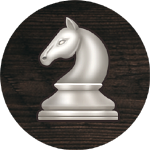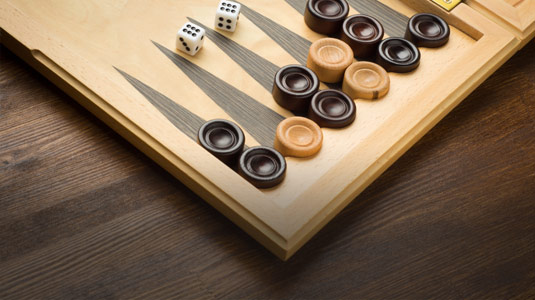Play Chess online with friends for free

Board
Chess is a strategy game for 2 players and is played on an 8x8 checkered board, with a light square in each player's lower right corner. The board is set up with the game pieces as shown below:
Object of the Game
The object of the game is to capture the other player's king. This capture is never actually completed, but once a king is under attack and unable to avoid capture, it is said to be "checkmated," and the game is over.

King
The king may move one square in any direction, including diagonally. In the above diagram, the king may move to any square with a green dot.

Queen
The queen moves any number of squares horizontally, vertically, or diagonally, but it may not jump over other pieces.

Knight
The knight moves from one corner to the other of a 2x3 rectangle of squares. Unlike other pieces, a knight may jump over other pieces (belonging to either player) to make its move. In the diagram, the knight may move to any square with a green dot.

Bishop
The bishop moves any number of squares along diagonals, but it may not jump over other pieces. In the above diagram, the bishop may move to any square along the lines shown, provided its path is clear.

Rook
The rook moves any number of squares horizontally or vertically, but it may not jump over other pieces. In the diagram, the rook may move to any square along the lines shown, provided its path is clear.

Pawn
Pawns on their starting squares may move either one or two squares straight ahead, without jumping. Pawns no longer on their starting squares may only move one square straight ahead. In the diagram, the dots show the squares to which the pawns can move.
Top Ranked Winners
Can I play online?
Yes. Install the Plato app on iOS, Android, or macOS to play the full catalog with friends or matchmade opponents. You can also play Ocho online in your web browser — no install needed.
Can I play with friends?
Yep. Tap Create Private Game, then share the invite link or invite from your contacts. When they tap Accept, they're seated at your table.
Is it free?
Yes — free to play and ad-free. If you buy something, it's for looks (themes, profile flair), not power.
Is it fair?
Shuffles, deals, dice, and timers run on Plato servers, not your device. Everyone plays by the same rules and no one can peek at hidden information.
Is it safe?
You can block and report from profiles or chat. Public spaces use filters and human review. Some rooms use Chat Pass to deter spam, and privacy controls let you limit who sees you online.
Live vs. turn-based: what’s the difference?
Both are turn-taking; the difference is the clock. Live uses short timers for quick back-and-forth. Turn-based gives you longer — often up to 24 hours per move in games like Chess — so you can play at your pace.
 Chess
Chess















